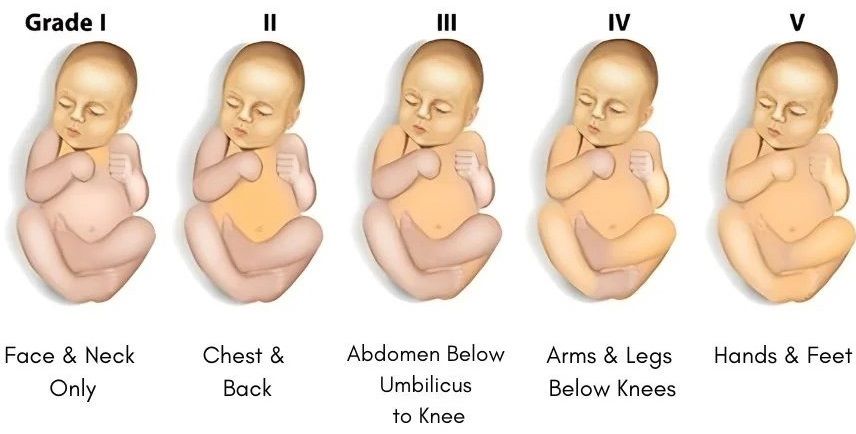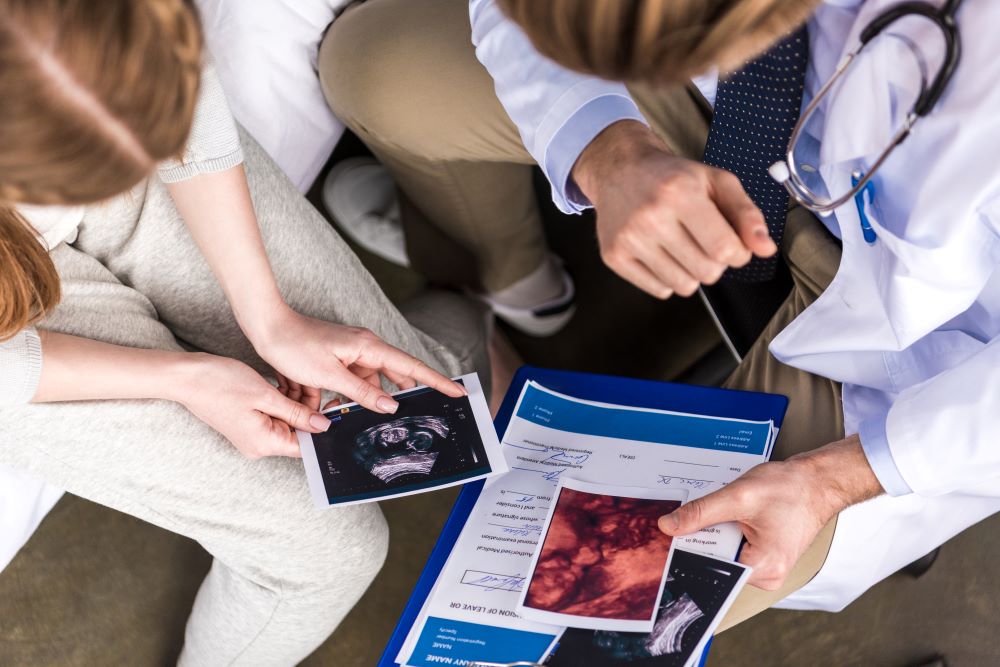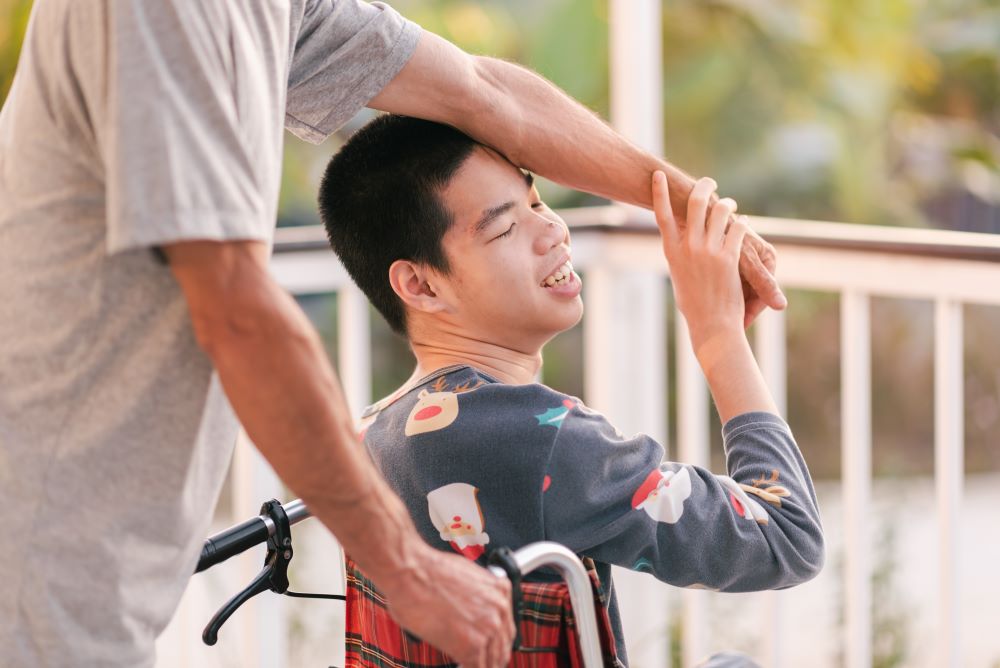Last Updated on November 29, 2024 by Michelle Wan
Dyskinetic cerebral palsy (CP) is a type of cerebral palsy that affects muscle control and coordination, resulting in involuntary movements, fluctuating muscle tone, and challenges with posture. It accounts for about 10–15% of all cerebral palsy cases and occurs due to damage to the basal ganglia, a region of the brain responsible for regulating voluntary movements.
When caused by birth injuries, dyskinetic cerebral palsy often results from preventable factors such as oxygen deprivation, trauma, or medical negligence during labor and delivery. This article delves into the causes, symptoms, and treatments of dyskinetic CP, as well as the legal and emotional support available for affected families.
Key Features of Dyskinetic Cerebral Palsy
Dyskinetic CP is marked by involuntary, uncontrollable movements that can make everyday tasks like eating, dressing, or writing challenging. Muscle tone fluctuates between being too tight (hypertonia) and too loose (hypotonia), making it difficult to maintain balance and posture.
Common Symptoms:
- Involuntary Movements: Slow, writhing movements (athetosis) or sudden, jerky motions (chorea).
- Posture Challenges: Difficulty sitting or standing upright due to uncoordinated muscle contractions.
- Fluctuating Muscle Tone: Alternates between stiffness and limpness.
- Facial Muscle Impact: Difficulty with speech, eating, or swallowing due to facial muscle involvement.

Causes of Dyskinetic Cerebral Palsy
Dyskinetic CP often arises from damage to the basal ganglia during brain development. This damage typically occurs before, during, or shortly after birth and is frequently linked to birth injuries. Common causes include:
Birth Asphyxia (Oxygen Deprivation)
Prolonged labor, umbilical cord complications, or delayed cesarean delivery can restrict oxygen flow to the baby’s brain, damaging the basal ganglia.
Trauma During Delivery
The improper use of tools like forceps or vacuum extractors can cause physical trauma to the baby’s head, leading to brain injury.
Neonatal Jaundice
Severe jaundice, if left untreated, can lead to a condition called kernicterus, which damages the basal ganglia and increases the risk of dyskinetic CP.

Maternal Infections
Infections such as rubella or toxoplasmosis during pregnancy can cause brain damage in the developing fetus.
Premature Birth
Premature babies are at higher risk for brain damage due to underdeveloped organs and complications like intracranial bleeding.
Medical Negligence
Failure to monitor fetal distress, improperly managing complications, or delays in necessary interventions can lead to preventable brain injuries.
Diagnosing Dyskinetic Cerebral Palsy
Early diagnosis is crucial for effective intervention. Dyskinetic CP is typically diagnosed through:
- Developmental Milestones: Delays in sitting, crawling, or walking can be early signs.
- Neurological Assessments: Evaluations of muscle tone, reflexes, and movement patterns.
- Imaging Tests: MRI or CT scans to identify damage to the basal ganglia.

Treatment Options for Dyskinetic Cerebral Palsy
While there is no cure for dyskinetic CP, various treatments can help improve mobility, communication, and quality of life. A multidisciplinary approach is often required, including:
Physical Therapy
It focuses on improving muscle strength, flexibility, and coordination and helps children learn strategies to control involuntary movements.
Speech Therapy
It addresses speech and swallowing difficulties caused by facial muscle involvement and incorporates communication aids like augmentative and alternative communication (AAC) devices.
Occupational Therapy
This method teaches adaptive techniques for daily activities like eating, dressing, and writing and may involve training with assistive devices.
Medications
- Muscle Relaxants: Drugs like Baclofen can help reduce involuntary muscle movements.
- Botox Injections: Temporarily relax overactive muscles.
- Anti-Seizure Medications: For children experiencing associated seizures.

Assistive Devices
Wheelchairs, walkers, or specialized seating systems support mobility and posture and Adaptive utensils and tools make daily tasks more manageable.
Surgical Interventions
In severe cases, orthopaedic surgeries or procedures like selective dorsal rhizotomy (SDR) may be performed to improve mobility and reduce spasticity.
Emotional and Financial Challenges for Families
Caring for a child with dyskinetic cerebral palsy can be emotionally and financially overwhelming. Families often face:
- Therapy Costs: Physical, occupational, and speech therapies can amount to thousands of dollars annually.
- Adaptive Equipment Expenses: Wheelchairs, communication devices, and home modifications can add significant financial strain.
- Emotional Stress: Parents often experience feelings of isolation or burnout while managing caregiving responsibilities.

Legal Support for Dyskinetic Cerebral Palsy Caused by Birth Injuries
When dyskinetic cerebral palsy is linked to medical negligence, families may have legal recourse to seek compensation for:
- Medical Expenses: Covering therapy, equipment, and ongoing care.
- Lost Wages: Reimbursing parents who reduce work hours or leave jobs to provide care.
- Pain and Suffering: Addressing the emotional toll on both the child and their family.
An experienced birth injury attorney can help families navigate the complexities of medical malpractice cases and secure the resources needed for their child’s care.
Learn more in our guide, How Birth Injury Compensation is Calculated.
How Thomas & Wan LLP Supports Families
At Thomas & Wan LLP, we understand the challenges families face when caring for a child with dyskinetic cerebral palsy. If you suspect your child’s condition resulted from a preventable birth injury, we are here to help you pursue justice and the financial support your family needs.
Dyskinetic cerebral palsy is a complex condition that poses significant challenges for affected children and their families. Understanding its causes, symptoms, and treatment options empowers parents to advocate for their child’s needs and access the resources necessary for their care.
If your child’s dyskinetic cerebral palsy was caused by a preventable birth injury, contact Thomas & Wan LLP today for a free consultation. Let us help you secure the justice and compensation your family deserves.




